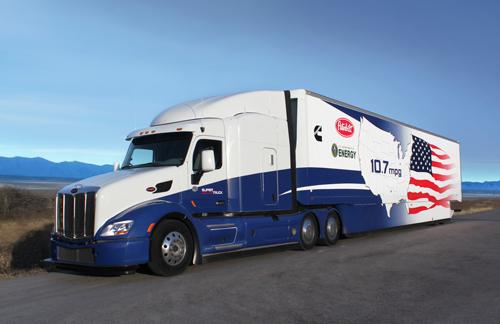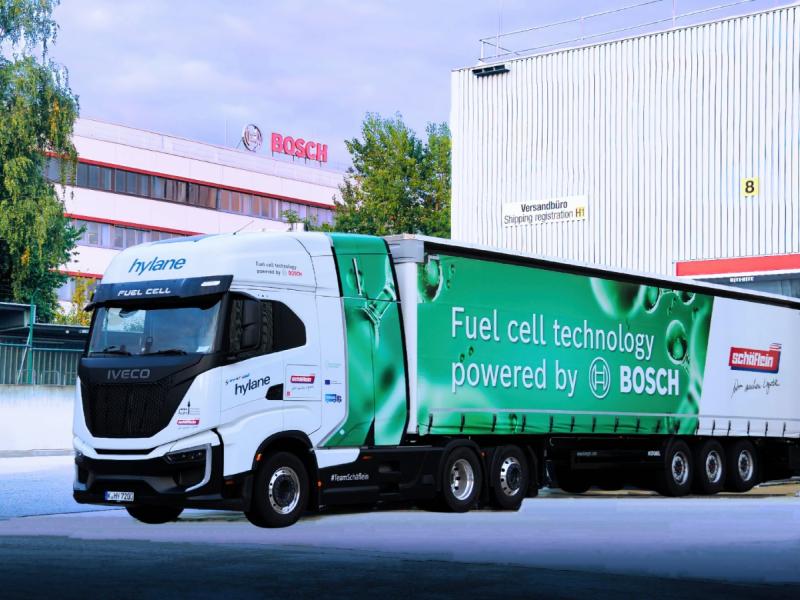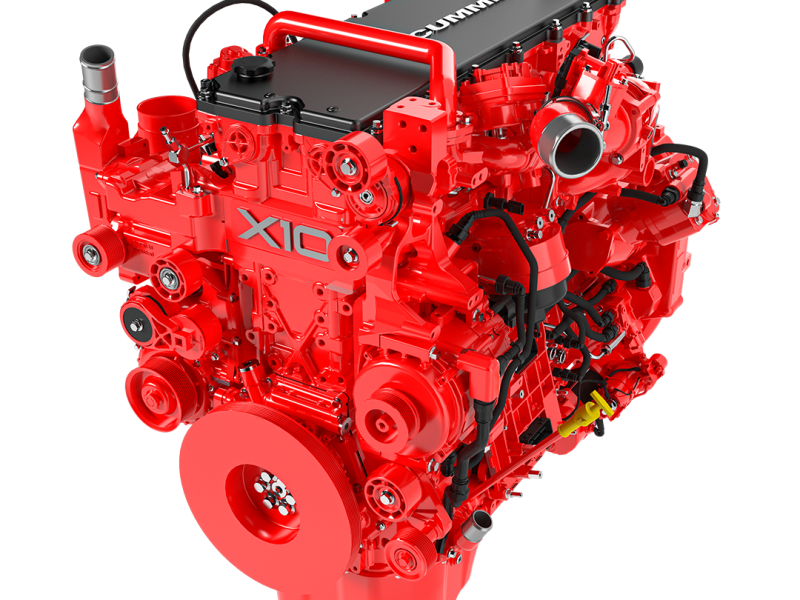Peterbilt and Cummins believe they will be able to achieve even better diesel economy than even their “SuperTruck” which achieved 10.7 US mpg (21.9L/100km) in real world testing earlier this year.
The Cummins-Peterbilt SuperTruck uses the Peterbilt Model 579, with best-in-class aerodynamic efficiency. The engine, based on Cummins ISX15, converts exhaust heat into power delivered to the crankshaft, and has electronic control software that uses route information to optimise fuel use.
The SuperTruck also includes chassis refinements, improvements in the aerodynamics and other significant advances in the engine.
Lightweighting throughout the tractor-trailer also enables increased freight efficiency.
The tractor trailer was developed as part of the US Department of Energy’s Super Truck programme, and features a high efficiency engine and an aerodynamic tractor-trailer to reduce drag.
Eaton Corporation, also part of the Cummins-Peterbilt SuperTruck project team, is developing a next-generation automated transmission that improves fuel efficiency in heavy-duty trucks.
Eaton’s contribution includes the design, development and prototyping of an advanced transmission that facilitates reduced engine operating speeds. Cummins and Eaton jointly designed shift schedules and other features to yield further improved fuel efficiency.
This demonstration of the Cummins-Peterbilt SuperTruck has exceeded DOE goals for freight efficiency – a key trucking metric based on payload weight and fuel efficiency expressed in ton-miles per gallon.
The SuperTruck achieved an 86 percent improvement in freight efficiency and a 75 percent fuel economy improvement over a 24-hour test cycle in December 2013.
The programme goal was a 68 percent freight-efficiency increase over a 2009 vintage baseline vehicle of the same weight traveling along the same route.
Cummins personnel have been focused on the engine and its integration with the powertrain to develop numerous changes in the combustion system as well as advances to reduce internal friction and so-called “parasitic power” – excess power the engine needs to run such things as lube and coolant pumps and air compressors.
In addition to the truck’s exterior, Peterbilt and its partners have been working on improvements in the drivetrain, the idle management system, weight reduction and vehicle climate control. Eaton’s advanced transmission facilitates further engine downspeeding for additional fuel economy benefits.
“Aerodynamics has been a significant contributor to the efficiency gains,” said Scott Newhouse, senior assistant chief engineer of product development at Peterbilt, “We are very pleased with what our team has been able to accomplish using a comprehensive tractor-trailer approach.”
reader reply 0140838a






